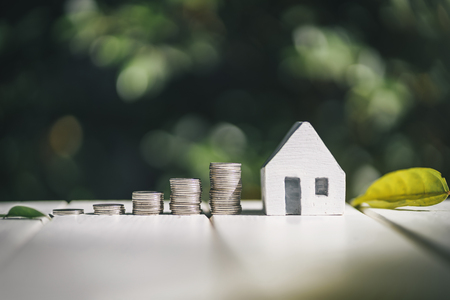Introduction: The Allure of Real Estate Wealth
The American Dream has always been closely tied to the idea of homeownership and building lasting wealth. For generations, real estate has stood as a gateway to financial freedom—a tangible path for ordinary people to rise above their circumstances and secure a prosperous future. Across the country, countless Americans are drawn to real estate not just for a place to live, but as a powerful investment vehicle. Whether you’re eyeing that fixer-upper down the street or considering holding onto a rental property for the long haul, the two most popular strategies—house flipping and buy-and-hold—each promise unique opportunities and challenges. In this article, we’ll unpack these two paths to real estate riches, exploring what makes each strategy appealing and helping you decide which approach could be your ticket to achieving financial independence in true American style.
2. House Flipping: Fast Profits, Fast-Paced Lifestyles
Imagine the thrill of transforming a run-down property into a stunning home—then selling it for a tidy profit, sometimes in just a matter of months. That’s the adrenaline-fueled reality of house flipping, a real estate strategy made famous by HGTV and popular among ambitious investors looking for fast returns. But is this fast-paced, hands-on approach right for you? Let’s break down the pros, cons, and core skills required—and share a real story of one beginner’s first flip.
The Pros and Cons of Flipping Houses
| Pros | Cons |
|---|---|
| Potential for quick profits | High financial risk if market shifts or renovation costs rise |
| Hands-on learning experience | Time-intensive and stressful |
| Chance to build valuable real estate & renovation skills | Short-term capital gains tax applies to profits |
| No need to manage tenants long-term | Requires upfront cash or financing |
| Exciting, project-based lifestyle | Success depends on accurate budgeting and timing |
Core Skills Needed for House Flipping Success
- Project Management: Coordinating contractors, budgets, and timelines is crucial.
- Market Analysis: Knowing which neighborhoods are “hot” and understanding buyer demand can make or break your investment.
- Negotiation: Securing good deals on both the purchase and sale sides maximizes profits.
- Risk Management: Planning for surprises (because there will be some) keeps you in the game financially and mentally.
- Design Sense: Even small upgrades can make a big difference in resale value if you know what today’s buyers want.
A Beginner’s First Flip: Real-World Story Time
Samantha, a teacher from Ohio, dove into her first flip with $30,000 in savings and plenty of YouTube research. She bought a distressed two-bedroom bungalow in a growing suburb for $120,000. Over three hectic months—balancing her day job with late nights painting cabinets—Samantha learned quickly: unexpected plumbing issues added $7,000 to her budget, but her choice of trendy finishes helped the home stand out. When she sold it for $180,000, after all costs and realtor fees, Samantha walked away with just under $20,000 in profit. It wasn’t easy money—but the thrill of transformation and the promise of financial freedom hooked her. For those who thrive on action and aren’t afraid to get their hands dirty, flipping can be an exciting path toward building wealth.
![]()
3. Buy and Hold: Slow and Steady Wealth Building
If you’ve ever dreamed of collecting rent checks while you sleep or building a nest egg that grows with each passing year, the buy and hold strategy might be your ticket to financial freedom. Unlike house flipping’s fast-paced hustle, buy and hold is all about playing the long game—investing in rental properties, earning steady cash flow, and letting time work its magic through appreciation and compounding returns.
The Power of Passive Income
With buy and hold real estate, every month brings in rental income that can cover your mortgage, taxes, insurance, and still leave some extra cash in your pocket. Over time, as rents go up and mortgages get paid down, that cash flow only gets sweeter. Many American investors love this approach because it creates a reliable income stream—think of it as building your own pension plan, one property at a time.
Appreciation: Wealth That Grows While You Wait
One of the most underrated perks of buy and hold investing is appreciation. Real estate values tend to rise over the years (even with ups and downs), meaning your property could be worth much more in the future than when you bought it. This “forced savings” effect builds your net worth quietly in the background while you focus on other things in life.
Real-Life Story: The Compound Effect in Action
Take Lisa from Atlanta, for example. She purchased her first rental home right after college, choosing a growing neighborhood where she saw potential. Fast forward ten years—her tenants’ rent checks have paid off a chunk of her mortgage, her property’s value has doubled thanks to local development, and now she owns three more rentals. Lisa’s story isn’t unique; thousands of Americans build their wealth steadily this way, using patience as their secret weapon.
Is Buy and Hold Right for You?
If you prefer consistency over quick wins, enjoy problem-solving (hello, leaky faucets!), and want to create generational wealth without constant buying and selling, buy and hold could be your best bet. It’s not always glamorous or fast—but it’s proven, resilient, and accessible for anyone willing to stick with it.
4. Money Matters: Comparing Returns, Risks, and Time Commitment
If youre eyeing real estate as your path to financial freedom, understanding the numbers behind house flipping and buy-and-hold is crucial. Let’s break down how each strategy stacks up in terms of potential profit, taxes, capital needed, risk, and time commitment—all with relatable American scenarios you might face in cities like Dallas or suburbs like Raleigh.
Potential Profits
| Strategy | Example Scenario | Potential Return |
|---|---|---|
| House Flipping | Buy a distressed $250k home in Phoenix, invest $50k in renovations, sell for $350k within 6 months | $50k (after costs), if market holds steady |
| Buy and Hold | Purchase a $300k duplex in Indianapolis, rent each unit for $1,200/month, hold for 5 years | $28,800/year gross rent; appreciation could add $50k+ to property value over 5 years |
Tax Considerations
Flipping: Profits are typically taxed as ordinary income—think short-term capital gains. If you flip several houses a year in Los Angeles, your earnings could be hit with both federal and state taxes.
Buy and Hold: Rental income is taxed but can be offset by deductions—mortgage interest, depreciation, repairs. Plus, long-term capital gains rates usually apply when you sell after a year or more.
Capital Requirements & Financing
| Strategy | Upfront Cash Needed | Lender Preferences |
|---|---|---|
| House Flipping | $60k+ (20% down plus rehab budget) | Hard money lenders or cash; higher interest rates common |
| Buy and Hold | $60k+ (20% down payment on a rental property) | Banks favor stable borrowers; lower rates for long-term loans |
Risk Levels & Time Commitment
- Flipping: High risk—market dips can wipe out profits overnight. Tight timelines mean you’re hustling: managing contractors, permits, and sales agents. Think of it as a full-time side hustle.
- Buy and Hold: Lower risk if local rental demand stays strong. Property management can be delegated. Its a marathon—not a sprint—for those aiming for mailbox money while working their day job.
The Bottom Line?
If you crave quick wins and have time to burn (plus nerves of steel), flipping offers fast returns but higher stakes. If you dream of steady cash flow and gradual wealth building—without betting the farm on every deal—buy-and-hold might be your ticket to long-term financial independence.
5. Lifestyle Fit: Which Strategy Matches Your Goals?
When it comes to choosing between house flipping and buy-and-hold real estate investing, your lifestyle, work-life balance, and personal aspirations play a huge role in determining which path is right for you. Not every investor is cut from the same cloth, and understanding what fits your personality can make all the difference on your journey toward financial freedom.
Work-Life Balance: Fast Pace vs. Long Game
If you thrive in fast-paced environments and enjoy tackling short-term projects with visible results, house flipping might be your calling. Flipping homes often requires intense bursts of activity—scouting properties, managing renovations, and quickly selling for profit. This can mean long hours on-site and a lot of hands-on involvement, but it also offers the satisfaction of seeing rapid progress and cashing out sooner rather than later. On the flip side, buy-and-hold investing is more like running a marathon than a sprint. You’re building wealth slowly over time by holding onto rental properties, collecting monthly rent checks, and benefiting from property appreciation. It’s less about daily hustle and more about steady management—perfect if you prefer stability and incremental growth that doesn’t consume every waking hour.
Personality Fit: Are You a Risk Taker or a Steady Planner?
House flippers are often natural risk-takers who don’t mind a little uncertainty. If you love negotiating deals, spotting hidden gems, and aren’t afraid to get your hands dirty (literally or figuratively), flipping could energize you. It’s also ideal for those who crave variety and enjoy solving problems on the fly. On the other hand, if you’re more comfortable with planning ahead, analyzing numbers, and letting your investments work quietly in the background, buy-and-hold might suit you better. This approach rewards patience, organization, and a focus on long-term stability rather than quick wins.
Personal Aspirations: What Does Financial Freedom Look Like to You?
Your vision for financial freedom will ultimately guide your decision. Do you dream of early retirement through passive income streams? Buy-and-hold investing aligns perfectly with this goal—imagine living life on your terms while your tenants help pay down your mortgages. Or maybe you’re looking for an entrepreneurial adventure where you can use creativity and hustle to build capital quickly; in that case, house flipping lets you roll up your sleeves and see immediate returns. In either scenario, matching your investment strategy with your lifestyle goals ensures that real estate becomes a tool that enhances—not hinders—your journey toward financial independence.
6. Real Stories: Learning from Everyday Investors
Nothing brings real estate strategies to life like the experiences of real people. Let’s dive into a couple of true-to-life stories that highlight both the wins and the lessons learned in house flipping and buy-and-hold investing across the U.S.
Flipping Success—and a Cautionary Tale
Take Jenna, a nurse from Austin, Texas, who decided to flip houses on the side. Her first flip was a modest 1950s bungalow she snagged at auction. After four months of late nights and learning how to tile via YouTube, she sold it for a $42,000 profit. The key? She kept her renovation budget tight and worked with a contractor she trusted.
But not every flip is a home run. Mark, an IT consultant in Phoenix, took on a fixer-upper only to discover hidden termite damage—turning his projected $30,000 profit into a $10,000 loss. “I learned that due diligence isn’t just paperwork; you have to get your hands dirty and inspect everything,” he says.
Buy and Hold: Building Wealth Over Time
Susan and Tom, schoolteachers in Ohio, started with one duplex as a way to supplement their retirement savings. Instead of quick flips, they focused on steady rental income and gradually added more units to their portfolio. Ten years later, their cash flow covers college tuition for their kids—and the properties have nearly doubled in value.
On the flip side, Chris from Seattle bought a rental in what seemed like an up-and-coming neighborhood. He struggled with high tenant turnover and costly repairs. It took years before his investment broke even, but Chris stuck with it—eventually hiring a property manager and seeing consistent returns.
Real Takeaways from Real People
These stories show there’s no magic bullet. Whether you’re flipping or holding, success often comes down to research, grit, and adaptability. Both strategies come with risks—but also potential for financial freedom if you play your cards right.
7. Conclusion: Choosing Your Path to Financial Freedom
At the end of the day, whether you choose house flipping or buy and hold, your journey in real estate is uniquely yours. Both strategies offer real potential for building wealth and moving closer to the American Dream—if you’re willing to put in the work, learn from every deal, and adapt along the way. House flipping can deliver quick returns and a sense of accomplishment with each project completed, while buy and hold offers steady cash flow and the power of long-term appreciation. Neither path is “better”—it all comes down to your risk tolerance, available time, financial resources, and personal goals.
If you’re just starting out, don’t let fear or analysis paralysis hold you back. Empower yourself by taking action on a small scale—maybe that’s renovating a single-family home in your neighborhood or purchasing your first rental property with a manageable mortgage. The most successful investors started with one step, learned by doing, and grew their portfolio as they gained confidence.
Ultimately, real estate investing isn’t just about making money—it’s about designing a life you love, building security for your family, and creating options for your future. Chart your own adventure by choosing the strategy that excites you and aligns with your vision of financial freedom. The key is to get started, stay curious, and keep moving forward. Your version of the American Dream is waiting—so why not begin today?


